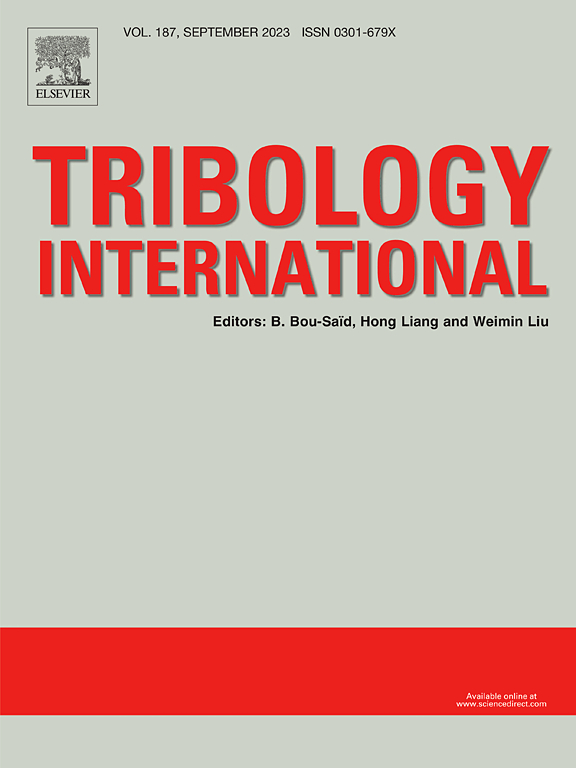Time-varying transient EHL behaviors of spur gear pairs considering tooth waviness extracted by gaussian filter
IF 6.1
1区 工程技术
Q1 ENGINEERING, MECHANICAL
引用次数: 0
Abstract
Tooth waviness has been experimentally proven to be the main cause of “ghost order” noise in high-speed gear transmission systems, which affects vibration and noise through meshing contact or transmission errors. However, most studies have focused on the influence of tooth surface roughness on the gear lubrication contact characteristics, ignoring the effects of mesoscopic tooth waviness. Furthermore, there is a lack of an effective method for extracting tooth waviness from measured tooth topographies. To fill this gap, a novel method for extracting tooth waviness based on the Gaussian filter is proposed. A three-dimensional transient line contact elastohydrodynamic lubrication (EHL) model coupling rolling, sliding, and elastic deformation is established. The effects of tooth waviness and its parameters on the lubrication characteristics and contact mechanical properties are analyzed. Results show that tooth waviness alters the overall stability of the gear meshing lubrication regime. Compared to smooth tooth surface, waviness has a more significant effect on rolling friction than on sliding friction and film damping. The effects of waviness order and amplitude on the tooth meshing contact mechanical properties exhibit opposite trends. This research establishes a theoretical foundation for understanding the dynamic service behavior under the influence of tooth waviness and holds significant guidance and engineering value for controlling the tooth surface machining quality.
考虑高斯滤波提取齿波的直齿副瞬态EHL行为
实验证明,齿波是高速齿轮传动系统中产生“鬼序”噪声的主要原因,它通过啮合接触或传动误差影响振动和噪声。然而,大多数研究都集中在齿面粗糙度对齿轮润滑接触特性的影响上,忽略了介观齿波度的影响。此外,还缺乏一种有效的方法来从测量的牙齿地形中提取牙齿波纹。为了填补这一空白,提出了一种基于高斯滤波的齿波度提取方法。建立了滚动、滑动和弹性变形耦合的三维瞬态线接触弹流润滑模型。分析了齿波度及其参数对润滑特性和接触力学性能的影响。结果表明,齿形变化改变了齿轮啮合润滑系统的整体稳定性。与光滑齿面相比,波纹度对滚动摩擦的影响比对滑动摩擦和膜阻尼的影响更显著。波纹度阶数和振幅对齿啮合接触力学性能的影响呈相反的趋势。该研究为了解齿形影响下的动态服务行为奠定了理论基础,对控制齿面加工质量具有重要的指导意义和工程价值。
本文章由计算机程序翻译,如有差异,请以英文原文为准。
求助全文
约1分钟内获得全文
求助全文
来源期刊

Tribology International
工程技术-工程:机械
CiteScore
10.10
自引率
16.10%
发文量
627
审稿时长
35 days
期刊介绍:
Tribology is the science of rubbing surfaces and contributes to every facet of our everyday life, from live cell friction to engine lubrication and seismology. As such tribology is truly multidisciplinary and this extraordinary breadth of scientific interest is reflected in the scope of Tribology International.
Tribology International seeks to publish original research papers of the highest scientific quality to provide an archival resource for scientists from all backgrounds. Written contributions are invited reporting experimental and modelling studies both in established areas of tribology and emerging fields. Scientific topics include the physics or chemistry of tribo-surfaces, bio-tribology, surface engineering and materials, contact mechanics, nano-tribology, lubricants and hydrodynamic lubrication.
 求助内容:
求助内容: 应助结果提醒方式:
应助结果提醒方式:


